Electric cars are on everyone's lips and may record an 80 percent increase in registrations in 2019. Nevertheless, only 1 percent of the newly registered vehicles on Germany's roads in 2018 were equipped with a purely electric drive. Many fleet managers are therefore asking themselves: Are e-cars worth it? We have answered the 8 most frequently asked questions for you.
Why should I use e-cars in my company? 2.
What subsidies do I receive for the purchase of electric cars? 3.
3. is it worthwhile building my own charging infrastructure?
4. are e-cars worthwhile for employees?
Are e-cars or conventional cars cheaper to keep? 6.
Are e-cars worthwhile especially for small and medium-sized enterprises (SMEs)? 7.
7) How good is the supply of public charging points?
8) What influence will the German government's planned climate package have on the purchase of electric mobility?
1. WHY SHOULD I USE IT IN MY COMPANY?
The reasons for introducing electric cars in your own company can be manifold and first require an analysis of your own needs for vehicles and mobility. Insofar as you frequently undertake shorter journeys, for example within a radius of 200 kilometres around the company location, electric cars with the available ranges are particularly attractive. Because everyone benefits from electric cars in the fleet: fleet managers, the employer brand and the employees.
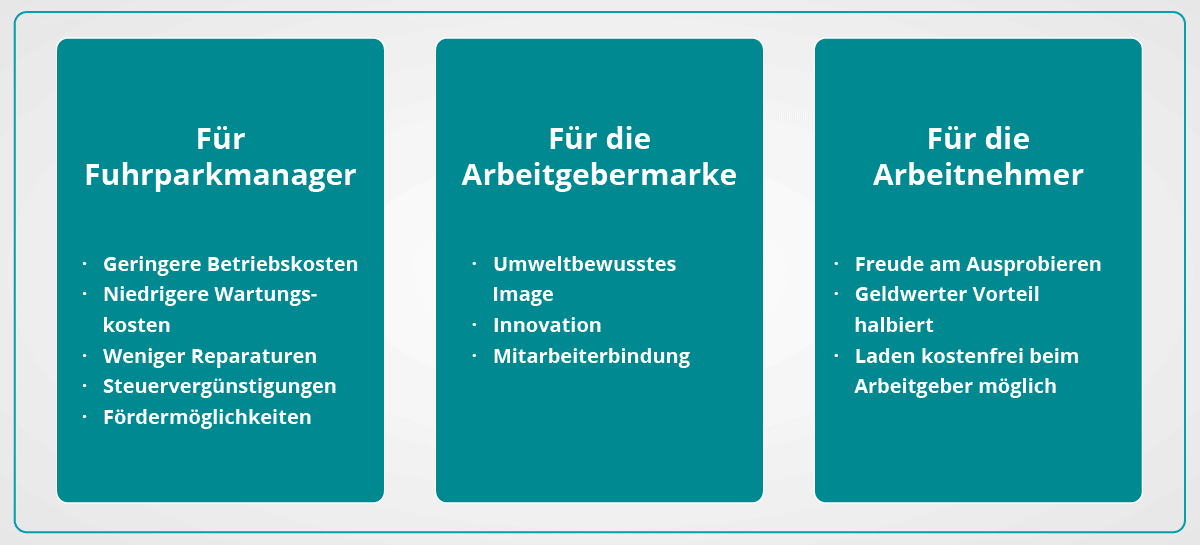
The advantages of e-cars are manifold, but they also have disadvantages, such as questions of range, charging options and the sometimes higher purchase costs. The question "When are e-cars worthwhile?" therefore always depends on the individual situation.
2. WHAT SUBSIDIES DO I RECEIVE FOR THE PURCHASE OF E-CARS?
The promotion of electric cars in Germany varies from federal state to federal state. The federal government itself has been offering an environmental bonus for certain vehicles for some time. A constantly updated list of models that are subsidised (e-cars and plug-in hybrids) can be found on the website of the Federal Office of Economics and Export Control (BAFA). It is worth taking a look at it, because the listed models that meet certain conditions are subsidised with up to 4,000 euros (3,000 euros for plug-in hybrids). In addition, the federal and state governments, including Saxony, offer subsidies for the construction of their own charging infrastructures. By the way: Since 1 July 2019, electric vehicles that have an acoustic warning system (AVAS) receive an additional flat-rate subsidy of 100 euros.
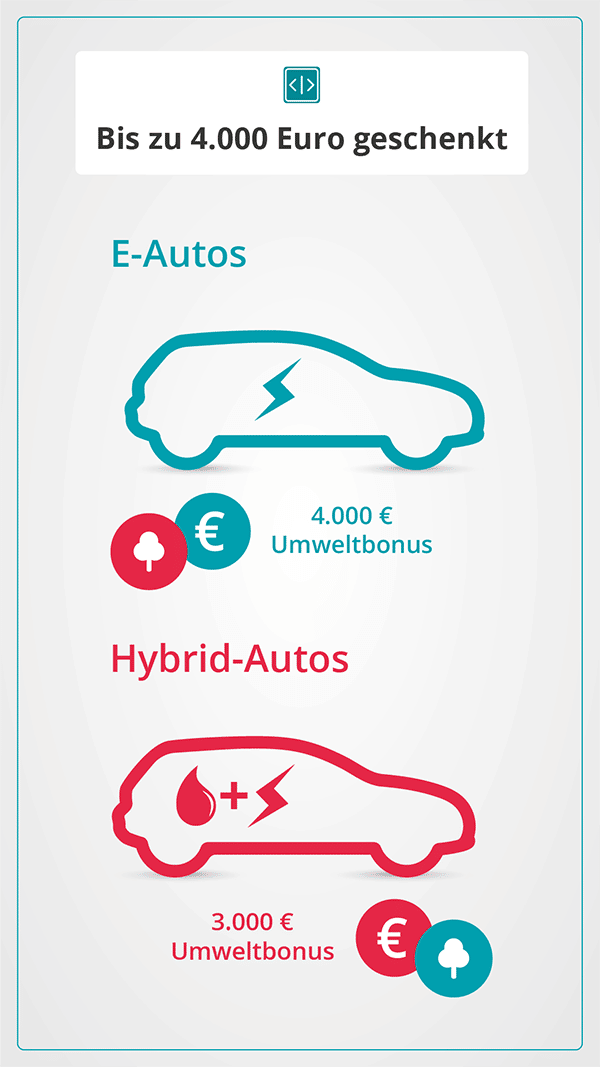
3. IS IT WORTH BUILDING YOUR OWN CHARGING INFRASTRUCTURE?
There is a lot to be said for setting up your own charging infrastructure on the company premises. However, it should first be checked whether the existing power cable network is suitable for the loads. Local electricity providers such as SachsenEnergie will be happy to advise you on this.
The advantages of setting up a charging infrastructure, for example in the company car park, are manifold. Employees who are provided with an e-car or own one themselves can be retained in this way. If the company's own charging points are made available to the public, this can bring in additional income as well as image benefits.
This is particularly profitable when the charging infrastructure is linked to energy generation on the company's own premises.
In the Free State of Saxony in particular, the Sächsische Aufbaubank (SAB) offers funding for the installation of decentralised electricity storage for photovoltaic systems. The cap here is 40,000 euros. If electricity storage systems are combined with the installation of charging stations, both infrastructures can be funded together, which can mean additional funding of up to 1,500 euros per charging station.
4 Are e-cars worthwhile for employees?
59 percent of employees who are thinking about buying an electric vehicle would be more likely to choose an employer who provides charging points to its employees free of charge. This was determined in a study by one of the world's largest charging point providers, Chargepoint, in 2017. 80 percent of those surveyed are open to buying an electric vehicle. E-bikes are also on the rise: In a study by the company Shimano, around 21 percent of commuters in Germany said they could also imagine commuting to work on a pedelec. Alternative mobility models are gaining wider and wider acceptance. Companies can score points here with an ecological and innovative image. For example, according to a survey by the VDI, 70 percent of engineers can already imagine switching to light e-mobiles such as e-scooters or e-bikes.
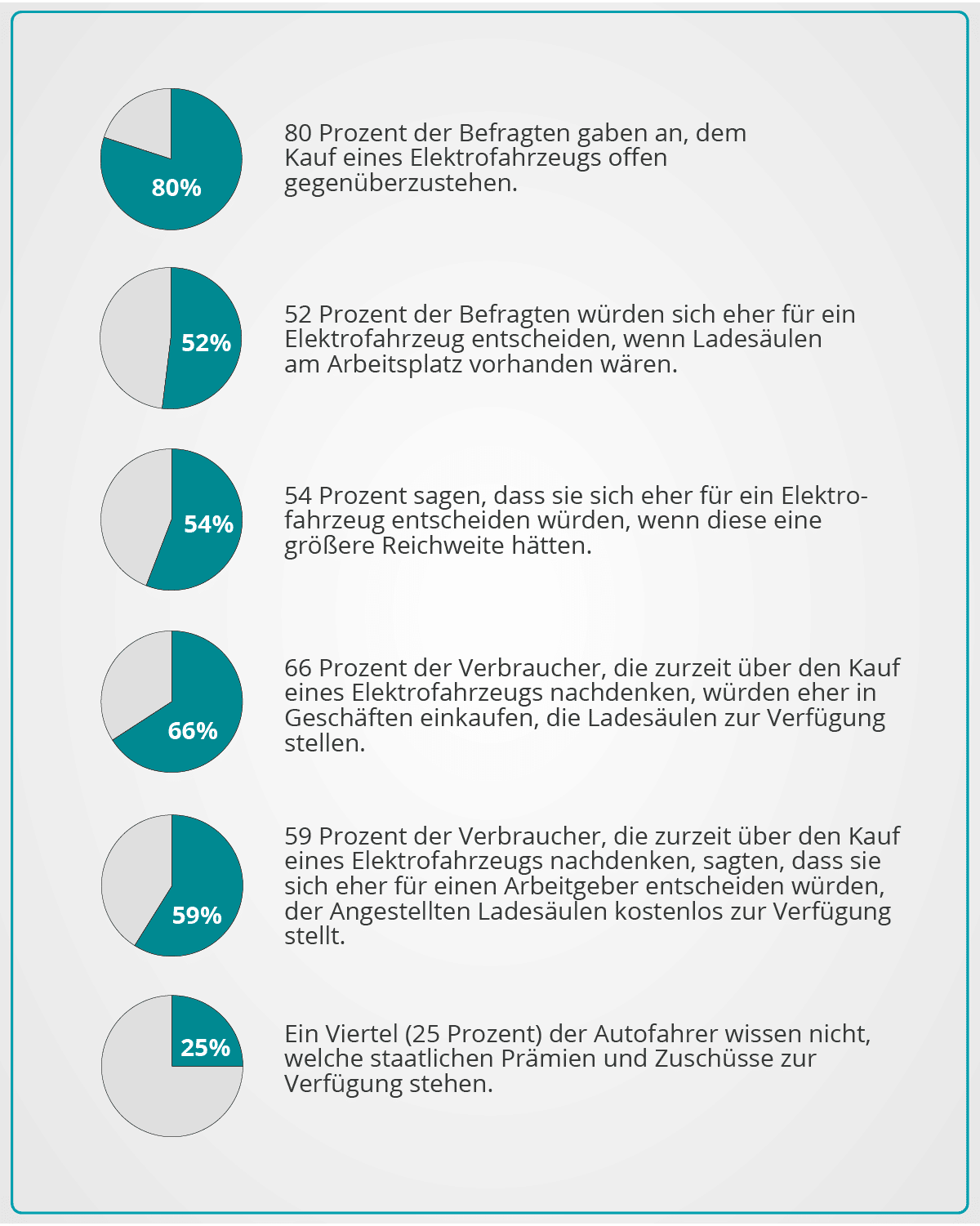
5. ARE E-CARS OR CONVENTIONAL CARS CHEAPER TO KEEP?
When purchasing a vehicle, it is important to have good advice that not only focuses on the sale or the model, but also on the possibilities, for example for charging, on site. A study by the ADAC examined car dealerships of various brands in the cities of Berlin, Hamburg, Cologne and Stuttgart to see whether the salespeople can provide competent advice on electric vehicles. In addition to their knowledge of their own models, it was also determined how well they know about charging infrastructure issues. Car dealerships of the Nissan, BMW and Audi brands performed particularly well.
In order to establish comparability, it is worth comparing models that are available as both "electric cars" and "combustion cars". One example is the Golf VII from Volkswagen. Regardless of the leasing rate, which is negotiated individually, the picture is positive for the E-Golf in terms of insurance, taxes and maintenance.
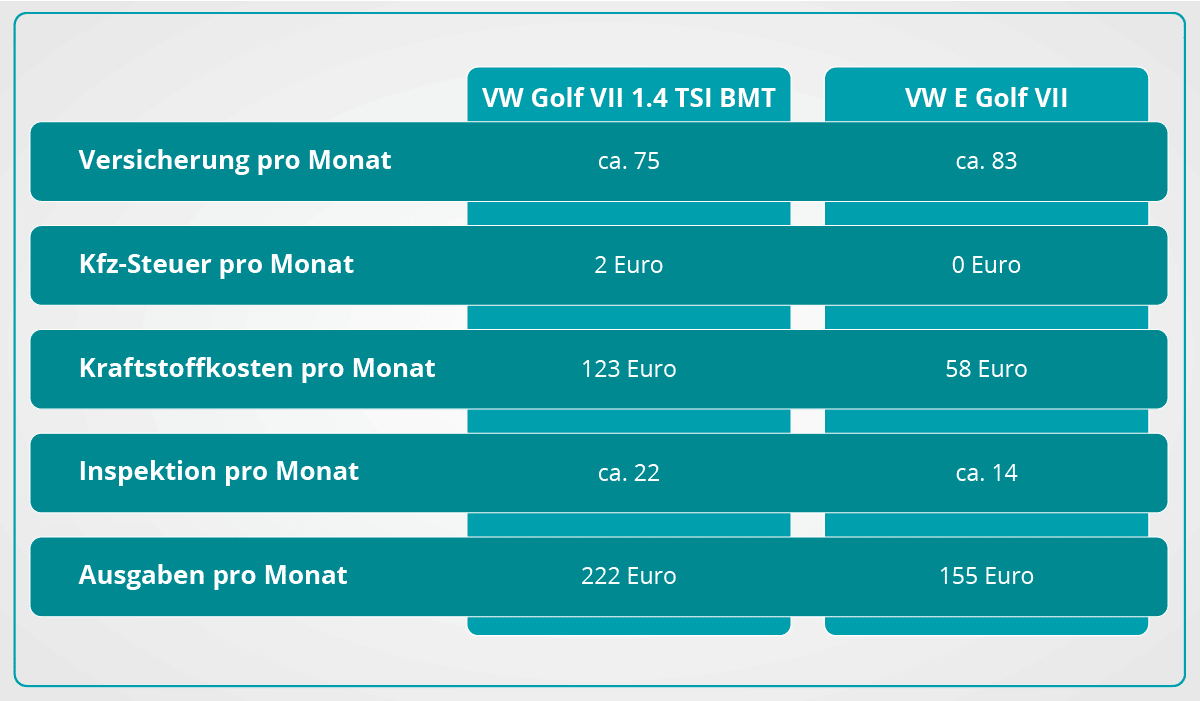
Insurance: Third party insurance SF3 - 51%, fully comprehensive insurance SF3 - 47%, mileage 15,000 km p.a., consumption 6.7 L/100 km resp. 15.4 KWh/100 km
6. are e-cars worthwhile SPECIALLY FOR SMALL AND MEDIUM-SIZED COMPANIES (SMEs)?
In its SME Study 2019, Gothaer Versicherungen found that only one third of the small and medium-sized companies surveyed are considering a switch to electric mobility. Larger companies between 200 and 500 employees are more likely to already have vehicles or plan to switch more frequently than smaller companies.
However, switching to e-cars can be worthwhile for any size of company and different sectors. For example, companies from different sectors can switch without "range loss" due to driving behaviour and often save money, for example delivery services or outpatient care services. More and more city or municipal administrations are also opening up to electric mobility, which further increases acceptance and promotes the expansion of public charging points.
7. HOW GOOD IS THE SUPPLY OF PUBLIC CHARGING POINTS?
The German government's climate package envisages building one million public charging stations by 2025. Various experts state in an article in the Handelsblatt that this figure is probably too high and not necessary. Currently, there are around 20,700 public charging points in Germany, which corresponds to an increase of 50 percent between 2018 and 2019. With the further spread of e-vehicles, the demand for charging points would also increase and operating them would become more economical. The German Association of Energy and Water Industries (BDEW) assumes that with 10 million e-cars, 350,000 public charging points would make sense. Charging options at home and at work are considered more important because vehicles spend more time stationary there. If you have private charging infrastructure, e-cars are all the more worthwhile.
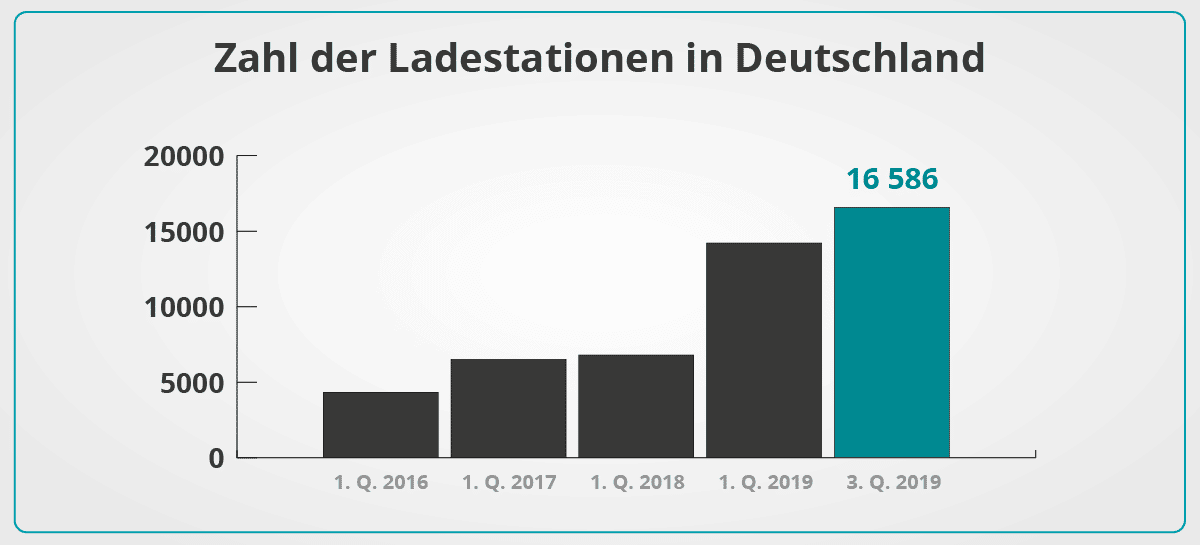
Number of public charging stations in Germany based on handelsblatt.com
Insofar as this is not possible, or the planned route is too long, there are already practical planning tools available today, such as the route planner from goingelectric.de. We have proven first-hand in this article that a business trip to a European country abroad also works.
8. WHAT INFLUENCE WILL THE FEDERAL GOVERNMENT'S PLANNED CLIMATE PACKAGE HAVE ON THE PURCHASE OF ELECTROMOBILITY?
The German government's climate package has a significant impact on individual mobility, as ADAC also assessed the first draft. Road passenger and freight transport accounts for around 20 percent of CO2 emissions nationwide. In order to achieve the immense reduction of around 42 percent of emissions by 2030 after decades of stagnation, various measures have been introduced. These include the introduction of CO2 certificates, which will further increase the price of petrol or diesel. The motor vehicle tax is also to be linked to a vehicle's emissions in future, which is likely to make petrol and diesel cars more expensive in terms of running costs. At the same time, the EEG levy for "green electricity" is to be cut, which could reduce the price of energy. Legal relief and support programmes for infrastructure and the purchase of e-cars will make the switch to e-mobility even more attractive in the near future.
Have we been able to answer your questions yet? If not, feel free to comment below this article or write us on Facebook or an email to frag@umschalten.de. We look forward to your feedback and will take care of your request. By the way, you can find out more about how the switch to electromobility can succeed in your company in our free whitepaper.





